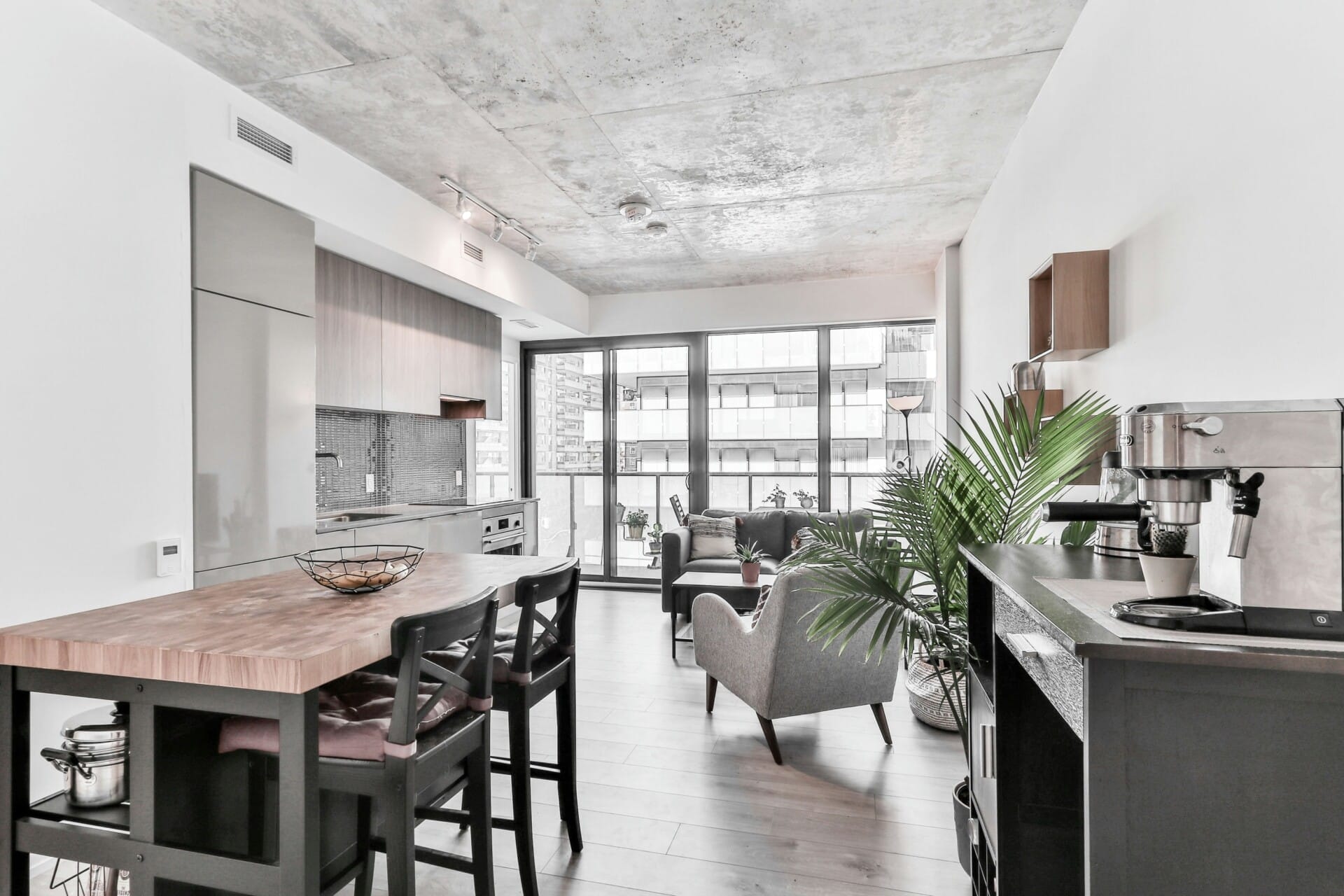10 Insider Tips for Nailing Your Construction Cost Estimates Every Time | RumahHQ

Are you gearing up for a construction project but feeling a bit overwhelmed by the numbers? You’re not alone! Estimating costs can sometimes feel like navigating a maze, especially with the ever-changing prices of materials and labor in Malaysia’s dynamic construction market. But don’t stress! We’ve got your back. In this article, we’re diving into ten insider tips that will help you nail your construction cost estimates every single time. Whether you’re a seasoned contractor or just getting your feet wet in the industry, these practical, easy-to-follow strategies will pave the way for more accurate budgeting and smoother project execution. So, grab a notepad and let’s turn estimating into your new super skill!
Understanding the Foundations of Cost Estimation
The art of cost estimation in construction isn’t just about crunching numbers; it’s about laying a solid foundation for a successful project. Understanding the basics helps you navigate the complex landscape of materials, labor, and overhead costs. Think of it this way: a well-prepared estimate is like a sturdy blueprint, guiding the entire construction process from the get-go.
First off, you need to get familiar with the various cost categories that impact your estimate. These typically include:
- Direct Costs: Expenses directly tied to the construction work, like materials and labor.
- Indirect Costs: Overheads such as site utilities and office expenses that aren’t directly linked to the project but are necessary for its completion.
- Contingency Costs: A buffer to cover unforeseen expenses or changes in project scope.
Another essential concept is understanding unit prices. These represent the cost per unit of material or labor, which can vary significantly based on market conditions or sourcing strategies. To enhance your cost estimates, create a table to track these unit prices, making it easier to adjust as prices fluctuate:
| Material/Labor | Unit Price (MYR) | Quantity | Total Cost (MYR) |
|---|---|---|---|
| Cement | 15 | 20 bags | 300 |
| Brick | 0.50 | 1000 pieces | 500 |
| Labour | 100 | 10 hours | 1000 |
| Total | 1800 MYR | ||

Mastering Materials: Choosing Wisely to Control Costs
When it comes to building projects, materials are one of the main factors that can make or break your budget. Selecting the right materials means not just looking at the price tag but also considering their long-term impact on your costs. Start by identifying the essential materials you need for your project. For example, think about the differences between local vs. imported products and how that affects transport costs and availability. Taking a closer look at sustainable options can also help you save in other areas like energy efficiency over time.
Another important tip is to always keep an eye on the quality-to-cost ratio. It might be tempting to go for the cheapest option on the market, but if the materials don’t last, you could end up spending more in the long run on repairs or replacements. Consider creating a spreadsheet comparing different quality options along with their warranties. This will give you a visual representation of what could end up being the most cost-effective option over time. Here’s an example table that could help illustrate this:
| Material | Cost per Unit | Warranty Period | Long-term Value |
|---|---|---|---|
| Bricks | RM 2.50 | 20 years | High |
| Concrete | RM 3.00 | 15 years | Medium |
| Steel | RM 5.00 | 30 years | High |
Don’t forget to build relationships with your suppliers as they can offer insights on bulk pricing or offcuts that could bring down your costs further. Regularly checking in with them can open doors to special promotions or discounts that may not be available to everyone. In addition, consider how seasonal changes affect availability and prices. For example, you might find that purchasing materials during the off-peak season can save you quite a bit! Always look at the bigger picture and remember that informed choices today can lead to significant savings tomorrow.

Labor Costs Demystified: Finding the Right Balance
When it comes to construction, understanding labor costs is like piecing together a complex jigsaw puzzle. It’s crucial to identify the various factors that contribute to labor expenses, such as skill level, regional wage differences, and project complexity. By knowing how these elements influence your overall costs, you can create more accurate estimates. For instance, hiring specialized workers might seem more expensive upfront, but their expertise can often lead to significant savings in time and materials.
One effective strategy is to build a dynamic pricing model that adjusts based on the specifics of each project. You could categorize labor costs into three groups: skilled labor, unskilled labor, and administrative support. This will give you a clearer picture of where your money goes and help you make informed decisions. For instance, including a table to analyze how different labor types impact your budget can assist in comparisons and adjustments, ultimately leading to more precise estimates.
| Labor Type | Cost per Hour (RM) | Estimated Hours | Total Cost (RM) |
|---|---|---|---|
| Skilled Labor | 50 | 40 | 2000 |
| Unskilled Labor | 25 | 50 | 1250 |
| Administrative Support | 30 | 20 | 600 |
Another tip is to regularly review and revise your labor rate assumptions. As market conditions fluctuate, it’s important to keep your estimates current. Engage with your workforce to get insights on their expectations, challenges, and any changes in pay scales they anticipate. Not only does this foster a transparent dialogue, but it also equips you with valuable data to refine your overall labor cost framework. Remember, the goal is to strike that sweet spot where you can ensure quality workmanship without breaking the bank.
The Power of Past Projects: Learning from Experience
Reflecting on past projects can be a goldmine of insights for your future estimation work. Each project carries its own unique set of lessons, whether it’s dealing with unexpected costs, time delays, or labor issues. When you keep a project diary or blog, documenting what went right and what didn’t, you create a strong resource to draw from for future estimates. Plus, you can share these experiences with your team, which fosters a culture of learning and improvement.
To really harness the lessons of your previous endeavors, consider setting up a retrospective review process after each project concludes. During these reviews, you can examine things like:
- Budget overruns and their causes
- Time management successes and failures
- Quality issues and client feedback
This practice not only helps you refine your estimation methods but also builds a stronger foundation for team collaboration and communication. With every project, you gather data that transforms into benchmarks for the next. And don’t forget, sometimes even the smallest projects can teach the most valuable lessons.
Another useful technique is to create a summary table after each project that highlights key metrics. This allows you to clearly visualize the project’s cost performance and keeps track of how changes in scope, labor, or materials affected the bottom line. Here’s a simple example to illustrate:
| Project Name | Estimated Cost (RM) | Actual Cost (RM) | Variance (RM) | Lessons Learned |
|---|---|---|---|---|
| Project A | 50,000 | 55,000 | +5,000 | Include buffer for materials |
| Project B | 75,000 | 75,000 | 0 | Timewise planning was spot on |
Using this kind of summary can help you identify patterns and areas needing adjustment in your estimating approach. Don’t underestimate the power of past projects; the knowledge gained from them can significantly elevate your future estimates and enhance your overall project delivery.

Leveraging technology can significantly enhance the accuracy and efficiency of your construction cost estimates. With the right tools, you can eliminate guesswork, reduce errors, and ultimately save both time and money. For instance, using construction management software allows you to compile data from previous projects, helping you to base your estimates on historical data. Popular options include Procore, Buildertrend, and CoConstruct, all of which are designed to streamline project management, budgeting, and communication.
Additionally, mobile applications can bring convenience right to your fingertips. Apps like Takeoff Live and PlanSwift let you create digital takeoffs on-site, providing instant access to measurements and quantities. This means you won’t need to rely on physical plans or measurements that can easily be misplaced. Having these tools at your disposal allows you to make quick adjustments on the fly, keeping your estimates as accurate as possible.
When it comes to collaboration, cloud-based platforms take the prize. Using tools like Google Drive and Dropbox, teams can share documents, revisions, and applications in real-time, ensuring everyone is on the same page. To mirror this tech-savvy approach in your estimates, consider keeping a running list of project costs, resources, and timelines. Below is a simple breakdown of effective tools to help your estimating process:
| Tool | Purpose | Benefits |
|---|---|---|
| Procore | Project Management | All-in-one solution with budgeting features |
| PlanSwift | Digital Takeoff | Instant calculations and easy adjustments |
| Google Drive | Document Sharing | Real-time collaboration and access |

Creating Contingency Plans: Preparing for the Unexpected
When you’re diving into a construction project, the unexpected can often derail your cost estimates. That’s why it’s crucial to have a robust contingency plan in place. Think of it as your safety net—ready to catch any financial surprises that come your way. Having a clear strategy for what to do when things go sideways can save you not just money, but also a ton of stress!
Start by identifying potential risks that could impact your project. Consider factors like delays, material price increases, or even unexpected site conditions. Once you’ve pinpointed these risks, it’s time to allocate a portion of your budget to address them. This is typically around 5% to 10% of your total estimated costs, depending on the project type and complexity. Here’s a simple way to visualize this:
| Risk Category | Contingency Percentage |
|---|---|
| Minor Delays | 5% |
| Material Price Fluctuations | 7% |
| Major Design Changes | 10% |
staying flexible is the name of the game. Regularly review and adjust your contingency plans as the project evolves. Engaging your team in this discussion enhances communication and ensures that everyone is on the same page. By embracing the unexpected rather than fearing it, you’ll not only gain confidence in your cost estimates but also pave the way for a smoother construction journey.

Effective Communication: Collaborating with Stakeholders
Effective collaboration with stakeholders is key in ensuring your construction cost estimates are accurate and reliable. Start by actively involving your key stakeholders—from project managers and architects to financial controllers and suppliers—right at the beginning of the project. By understanding their perspectives, inputs, and constraints, you can create a more comprehensive estimate that sits well with everyone involved. Remember, their insights can unveil hidden costs or potential savings.
Consider setting up regular communication checkpoints throughout the estimating process. These touchpoints can be a blend of formal meetings and informal catch-ups. It’s essential to keep the lines of communication open, allowing everyone the opportunity to express concerns or suggestions. You could try using collaborative tools like shared documents or project management platforms. This ensures that all stakeholders are aligned and any changes in the scope of work are reflected promptly in your estimates.
Lastly, don’t underestimate the power of a visual approach in your discussions. Utilize charts and diagrams to illustrate complex data or project timelines. For example, using Gantt charts can provide insight into project phases and potential overlaps that could affect costs. Here’s a simple table that can help breakdown stakeholder roles and responsibilities:
| Stakeholder | Role | Input Needed |
|---|---|---|
| Project Manager | Oversee project execution | Timeline constraints |
| Supplier | Supply materials | Price quotes |
| Architect | Design project | Design specifications |
| Financial Controller | Control budget | Cost limitations |

Review and Revise: The Importance of Continuous Improvement
In the world of construction, the first estimate is often just the beginning. It’s crucial to embrace a mindset of continuous improvement. This means regularly assessing your past estimates, identifying discrepancies, and making necessary adjustments. By comparing your previous projects with the actual costs incurred, you’ll develop a clearer understanding of the factors that led to any overages or savings.
One effective way to foster ongoing enhancement is through regular team debriefs after project completion. Gather your crew and discuss what worked well and what didn’t. Use these insights to create a feedback loop that continuously informs your future estimates. Keeping an open line of communication encourages collaboration, allowing for the sharing of valuable lessons learned, ultimately leading to better accuracy and efficiency in future projects.
Don’t forget the importance of leveraging technology in this process. This can come in various forms, such as cost estimation software, project management tools, and detailed forecasting models. By leveraging these resources, you can automate repetitive tasks and reduce human error. Below is a simple comparison of some popular tools available:
| Tool Name | Key Features | Best For |
|---|---|---|
| ProEst | Cloud-based, customizable templates | Small to medium-sized contractors |
| CoConstruct | Integrated with project management | Home builders and remodelers |
| PlanSwift | Takeoff software with measuring tools | Detail-oriented estimators |
To Wrap It Up
Wrapping up, nailing your construction cost estimates isn’t just about crunching numbers—it’s about mastering the art of planning and being a pro at decision-making. Those insider tips we shared aren’t just theoretical; they can be your toolkit to navigating the sometimes tricky landscape of construction costs in Malaysia.
Remember, every project is a learning opportunity. Whether you’re tackling a small renovation or a grand build, keep these tips close at hand, and tweak them to fit your unique situation.
So, next time you’re at the drawing board, channel your inner estimator and go in with confidence. With a good strategy and these insights, you’ll be well on your way to crafting estimates that hit the mark, every time. Happy building!